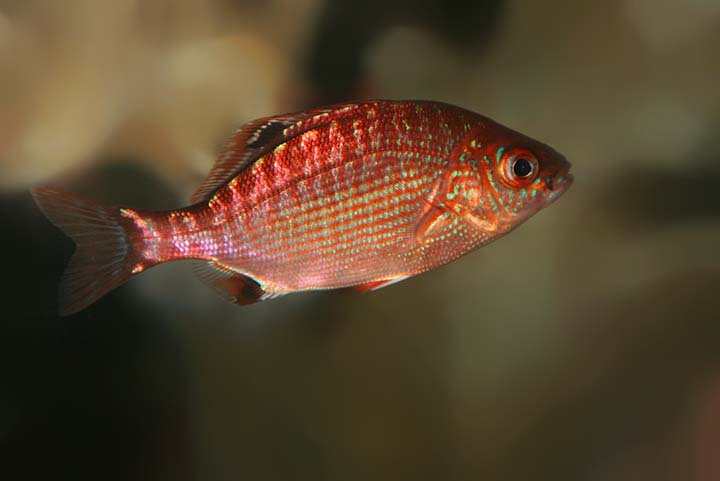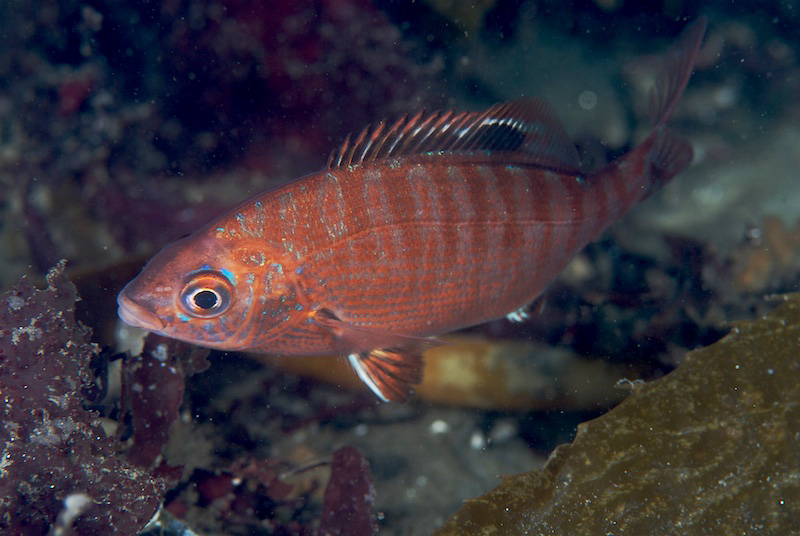
Hypsurus caryi
FAMILY
Embiotocidae
TAXONOMY
Embiotoca caryi Agassiz, 1853, San Francisco Bay, California,
United States.
OTHER COMMON NAMES
English: Rainbow surfperch; Spanish: Perca.
PHYSICAL CHARACTERISTICS
Maximum length 11.8 in (30 cm). Deep bodied and laterally
compressed, lateral line scales uninterrupted. Red and blue
stripes on body and about 10 reddish brown bars on upper part
of flanks. Pelvic and anal fins reddish orange with blue edges.
DISTRIBUTION
Pacific coast from Cape Mendocino, California, United States,
to Isla San Martin, Baja California.
HABITAT
Around rocky shores, reefs, piers, and kelp beds, to depths of
132 ft (40.2 m).
BEHAVIOR
In the fall, gathers in large aggregations prior to breeding; females
move into shallow coastal waters to give birth the following
summer. Sometimes function as cleaner for other fishes
by picking off parasites.
FEEDING ECOLOGY AND DIET
Feeds during day; eats mostly amphipods and copepods. Described
as an oral winnower, meaning it takes mouthfuls of
sand or turf, selectively removes food items, and spits out the
remainder.
REPRODUCTIVE BIOLOGY
Viviparous; nutrient and gas exchange occurs between mother
and the developing embryos. Females gravid from April until
mid-September, and carry 9–22 young. Juveniles born at
lengths of about 2.7 in (6 cm). Males develop swelling in tissues
surrounding first anal fin spine during breeding, creating
an intromittent (copulatory) organ used in internal fertilization.
After mating, sperm are stored for several months in female’s
ovarian cavity prior to fertilization.
CONSERVATION STATUS
Not listed by the IUCN.
SIGNIFICANCE TO HUMANS
Minor commercial importance as food fishes.
Photo Gallery of - Rainbow seaperch





 Animalia Life
Animalia Life